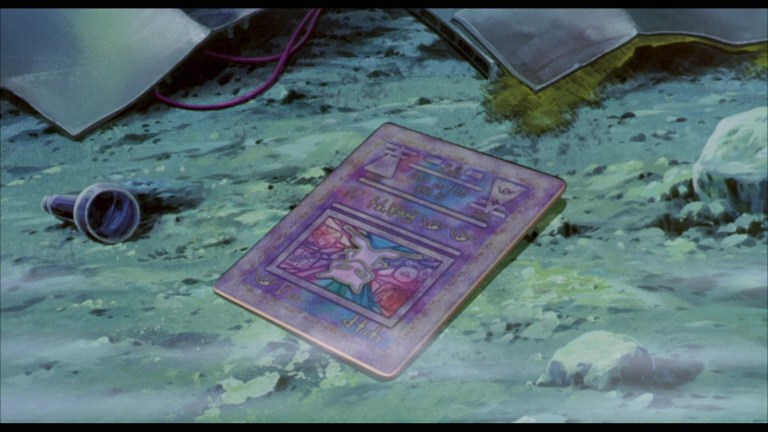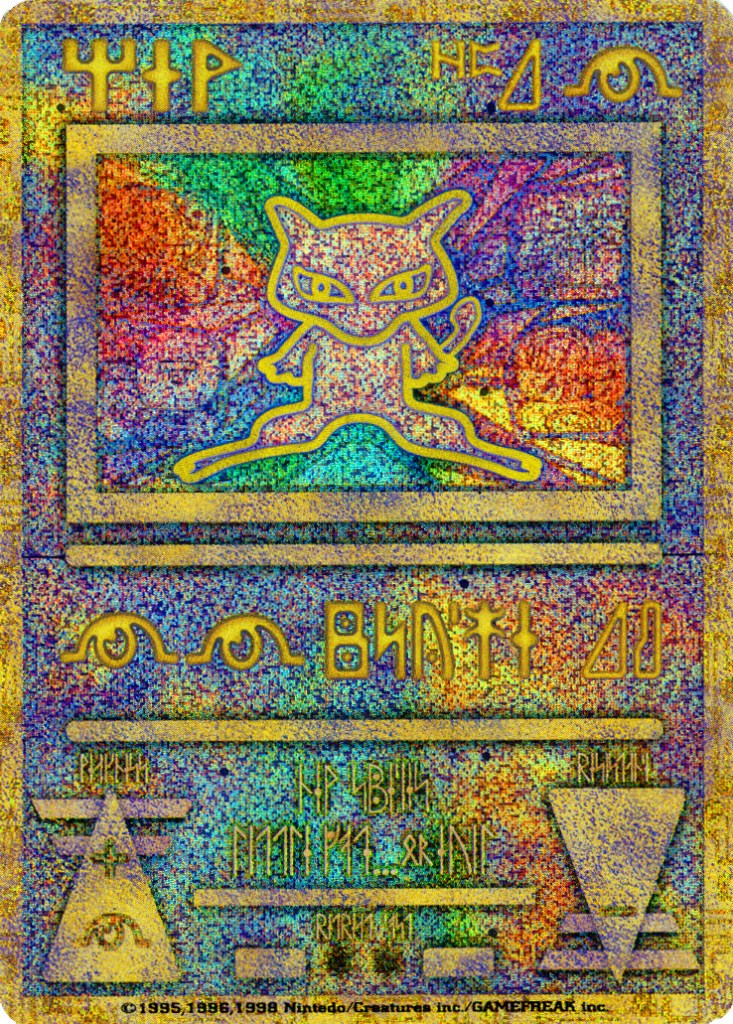Pokémon The Movie 2000 Introduced a Generation of Kids to Harsh Capitalism
A giveaway for the second Pokémon film upended the schoolyard trading card economy for good.

Released at the apex of the first wave of Pokémania in 2000, the second Pokémon feature film put an exclamation point on a worldwide phenomenon.
By the time Pokémon the Movie 2000 arrived to North American theaters in July of…well, 2000, Pokémon was already the biggest game in town. From the 1998 release of the video games Blue and Red to the ongoing run of the anime, to the successful launch of its trading card game, the Pokémon franchise didn’t need to sweeten the pot to get kids to show up en masse for the opening weekend of the second movie. But sweeten the pot it did anyway, because Pikachu loves us.
For the first week of the film’s release, buying a ticket to Pokémon the Movie 2000 didn’t just grant the purchaser access to a movie theater, it also got them a special treat: a gorgeous Ancient Mew promotional Pokémon card.

To this day, the Ancient Mew card remains one of the most striking trading cards ever printed. As its “ancient” moniker suggests, this Mew is designed to look like something from the distant past—as though it was the original Pokémon artifact that Nintendo uncovered in the sand. The slab of cardboard has many of the features of a “normal” Pokémon card, including an image of the Pokémon Mew and sections for its HP and attack values, but the text is rendered in an inscrutable alphabet (which in reality is a combination of Germanic runes and Mayan glyphs).
Combine that intrigue with the card’s shiny rainbow texture and it’s not hard to imagine how a kid would view Ancient Mew as the most precious relic in the world. In fact, I don’t have to imagine it. I was one such kid! I vividly remember waiting in a long line outside of a theater, experiencing mounting excitement as some teenaged employee began to pass out copies of the colorful card in its clear wrapper. I barely even recall watching the movie itself, with my eyes continually drawn back down to the card in my hand, trying to make out its mysterious features in the dark of the auditorium. By the time Pokémon the Movie 2000 concluded its breezy 82-minute runtime, I was excited to get out into the world to show all my friends the treasure I discovered. And that’s when Pokémon taught an entire generation an important lesson about capitalism… more specifically the lesson of supply and demand.
To the young, untrained eye, the Ancient Mew card looked like one of the most precious trading cards in the world. But of course, how could it be if its acquisition was tied to buying a $6 movie ticket? Pokémon the Movie 2000 would eventually gross a little over $40 million in the U.S, of which nearly $20 million came in its opening weekend. That number extrapolates out to around two to four million tickets sold in the first week, and therefore around two to four million Ancient Mew cards immediately entering circulation. Many owners of Ancient Mew cards expected to enter the schoolyard stock market with a valuable commodity, only to discover that all of their friends already had one, rendering it next-to-worthless. It all represented a quicker and more complete instruction on economics than anything a grade school could offer.
Funnily enough, that disappointing Ancient Mew experience is exactly what Pokémon the Movie 2000 was trying to instill in its audience. Each of the first two Pokémon films, Pokémon: The First Movie and Pokémon the Movie 2000, have weirdly explicitly anti-Pokémon themes. Undoubtedly aware of its pop culture lightning rod status, Pokémon: The First Movie tries to cast its central monsters as non-violent, despite the whole point of the franchise being that you can compel Pokémon to battle. There’s a hilarious scene in which two Pokémon are throwing haymakers at each other, and the human characters despair at how unnatural it all is, despite the fact that Pokémon battles featuring lightning bolts and fire blasts are legally sanctioned.
Similarly, Pokémon the Movie 2000 is all about the dangers of collecting. The film’s antagonist, Lawrence III, is a famous Pokémon collector who will do whatever it takes to capture the legendary birds Articuno, Zapdos, Moltres, and Lugia. Though gamers are welcome to catch all four of those birds in the first two generations of Pokémon games with no consequences, Lawrence III’s intrusion into nature causes a climate catastrophe that hero Ash Ketchum has to fix. By the end of the movie, Lawrence III has realized the error of his ways and resolves to be a more responsible consumer. In fact, that only item in his collection that he opts to keep is none other than… an Ancient Mew card!
With that ending revelation, it’s clear that Pokémon the Movie 2000 wasn’t just trying to expose its young viewers to the harsh reality of unchecked capitalism but also to protect them from it. As Lawrence III learned, the beautiful artifact wasn’t an asset to be sold but a gift to be cherished. Even the best laid plans of Pikachus and Hitmonchans often go awry, however, because something interesting has happened with Ancient Mew cards in recent years. Despite the ample initial supply, the demand continues to go up.
Depending on the condition of the card and whether it’s still shrink-wrapped, an Ancient Mew can sell for anywhere between $30 and $400, which is a hell of a lot more than that initial Pokémon the Movie 2000 ticket price. This adjustment in value is due to several likely reasons. Pokémon card collecting enjoyed a surge in popularity in the pandemic era, bolstered by a sense of nostalgia, and millennials earning more free time and disposable income. Additionally, the supply of Ancient Mew cards has surely dropped over the last 24 years as many copies fall victim to washing machines and weather.
Some Ancient Mew cards, however, can sell for as much as $5,000! That’s because Nintendo made an error in its first printing of the card. Ultimately there were five total printings of the Ancient Mew. The first iteration features a major spelling error in which the “Nintendo” copyright at the bottom is spelled “Nintedo.” While the error was corrected in later printings, plenty of copies of the misprinted card made their way into circulation and it’s this version that is now the most valuable.
Pokémon the Movie 2000 may have intended to teach its young audience about the vagaries of capitalism with a beautiful yet abundant trading card. In the end though, capitalism ended up teaching Pokémon a lesson instead. On a long enough timeline, demand wins out.
